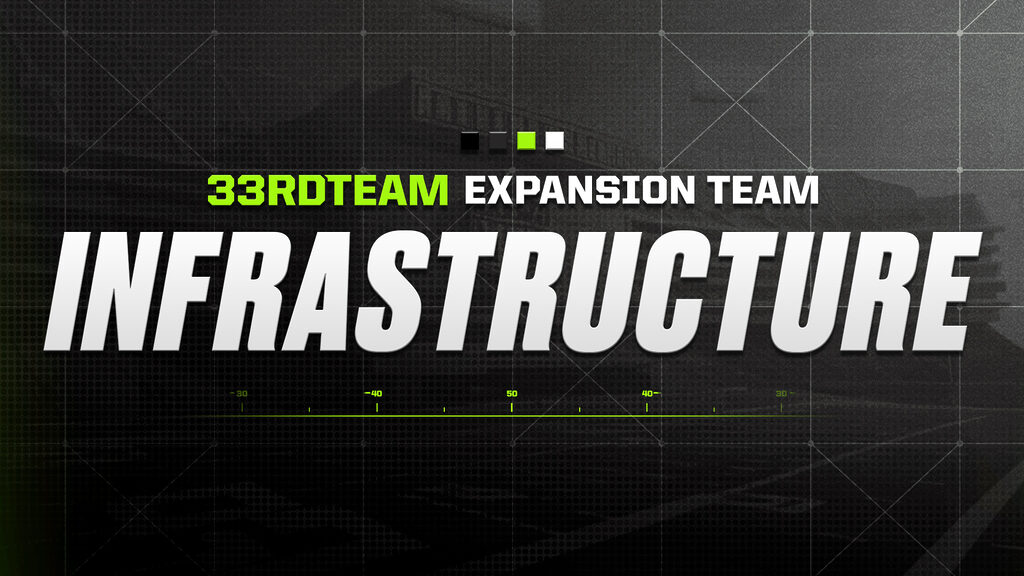Analysis
6/22/23
6 min read
When Building an Expansion Team, Infrastructure is Paramount

This is the first of three pieces outlining the necessary steps for the formation of an expansion team — a 33rd team. This installment focuses on the building of the franchise’s infrastructure. The series will accompany The 33rd Team's process of creating an expansion team.
>>MORE EXPANSION TEAM: Football Operations | Assembling Coaching Staff & Roster | Expansion Draft | Fantasy Outlook | Projected Win Total |
As we begin exploring how you, our readers, would construct the mythical 33rd team, we would like to let you know what goes into building an actual NFL expansion franchise.
I was the general manager of the Carolina Panthers when they entered the league in 1994. Having lived it, let me take you through what should happen and what must happen before you even begin to think about the salary cap, expansion draft or coaching staff.
As soon as an expansion ownership group is formed, its top priority must be hiring an experienced, successful football person as president. The model would be the Atlanta Falcons under Rich McKay, the Green Bay Packers under Mark Murphy and the Nashville expansion Major League Baseball group that hired World Series architect Dave Dombrowski.
Why do this? The NFL is governed by a constitution and bylaws unique to the league and a cultural fabric that makes the NFL different from any other business or professional sport. While the axiom that “owners own” is absolutely true, creating a franchise from scratch is not a job that can be done efficiently, economically or successfully by a leader coming from outside the industry.
There is too much to do; there are too many people with specialized experience to hire and too many unintended consequences attached to every decision to entrust this herculean task to a person with non-NFL experience. In the NFL, there are two things if you waste, you never get back: time and money. Both are at a premium in the expansion experience.
Having been placed in that position of authority, the top person has a number of immediate tasks to accomplish even before the franchise is awarded. There is a financial cost to this, but it must be borne. The more infrastructure that can be put in place before ownership closes, the faster the “new kids on the block” will become competitive on the field and at the box office.
Building the Infrastructure
The buildout must begin (no pun intended) with brick-and-mortar. Other than player scouting, day-to-day NFL football operations cannot be done remotely. Coaching, strength and conditioning, injury diagnosis, treatment and rehabilitation, classroom instruction, team meetings, draft preparation and, of course, on-field walk-throughs and practice all must be done in a central facility.
That building operates 11 months a year, seven days a week, and requires every bit the same unique and complex architecture and electronics as the state-of-the-art ESPN complex where I worked following my time in the NFL.
Though the location of our 33rd franchise is not the subject of this piece, I can tell that of the most likely possible locales (Oakland, St. Louis, Sacramento, San Antonio and Toronto), only St. Louis has an existing facility that might suffice as a long-term functional home for an NFL team.
Finding and building that facility is job No. 1. The likelihood is our team will be in a temporary facility for the first season. That must be identified, contracted for and likely renovated.
When it comes to the permanent facility, NFL experience really comes in handy. If feasible, you want that permanent facility located reasonably close to the airport. It must have enough space for three full football fields and an indoor facility that contains a full artificial turf field.
You would like it to be fairly close to upper-middle-class residential areas where the players and staff would have a reasonable commute. If the plan is to hold training at the club’s facility (as most teams do), you need another full field, plus parking and seating for a minimum of 2,500 fans.
All of the above is not an easy task. When our football people arrived in Charlotte, N.C., we were told the Panthers’ non-football folks, working with the city fathers, had established a practice facility at a local municipal high school stadium and recreation center. After a one-hour walk-through by our football group, it was obvious the chosen facility was unworkable and could not be renovated.
With less than a year until our first minicamp, we had to locate and renovate a practice facility somewhere in the greater Charlotte area. Fortunately, thanks to the incredibly hard work of our football operations director – Steve Champlin, who had been with us in Buffalo – and a lot of luck, we found Winthrop University in Rock Hill, South Carolina.
We located our football operation (offices, training room, locker and weight rooms, video, scouting and PR departments) in a renovated space beneath the stands of Winthrop’s basketball area. These accommodations were anything but plush, but Winthrop’s athletic staff, led by Steve Vacendak, were incredibly welcoming and helpful.
We built two full NFL practice fields on vacant land. When the team took those fields in April 1995, we felt we had constructed the Eiffel Tower in three months. After the ’95 season, we moved to our permanent facility at Bank America Stadium in the heart of downtown Charlotte.
As mentioned previously, if management intends to hold training camp off-site, the same conditions, plus housing and dining facilities for close to 200 people, must be available during the last week of July and the first three weeks of August. This is a difficult task, which is why many NFL clubs that have built full-service, state-of-the-art practice facilities hold camp “at home.”
In our next installment, we will provide the parameters for assembling a football operations staff.
As told to Vic Carucci
Bill Polian is a former front office executive and a six-time Executive of the Year award winner who won Super Bowl XLI with the Indianapolis Colts. Polian’s career as an executive earned him an induction into the Pro Football Hall of Fame in 2015.








